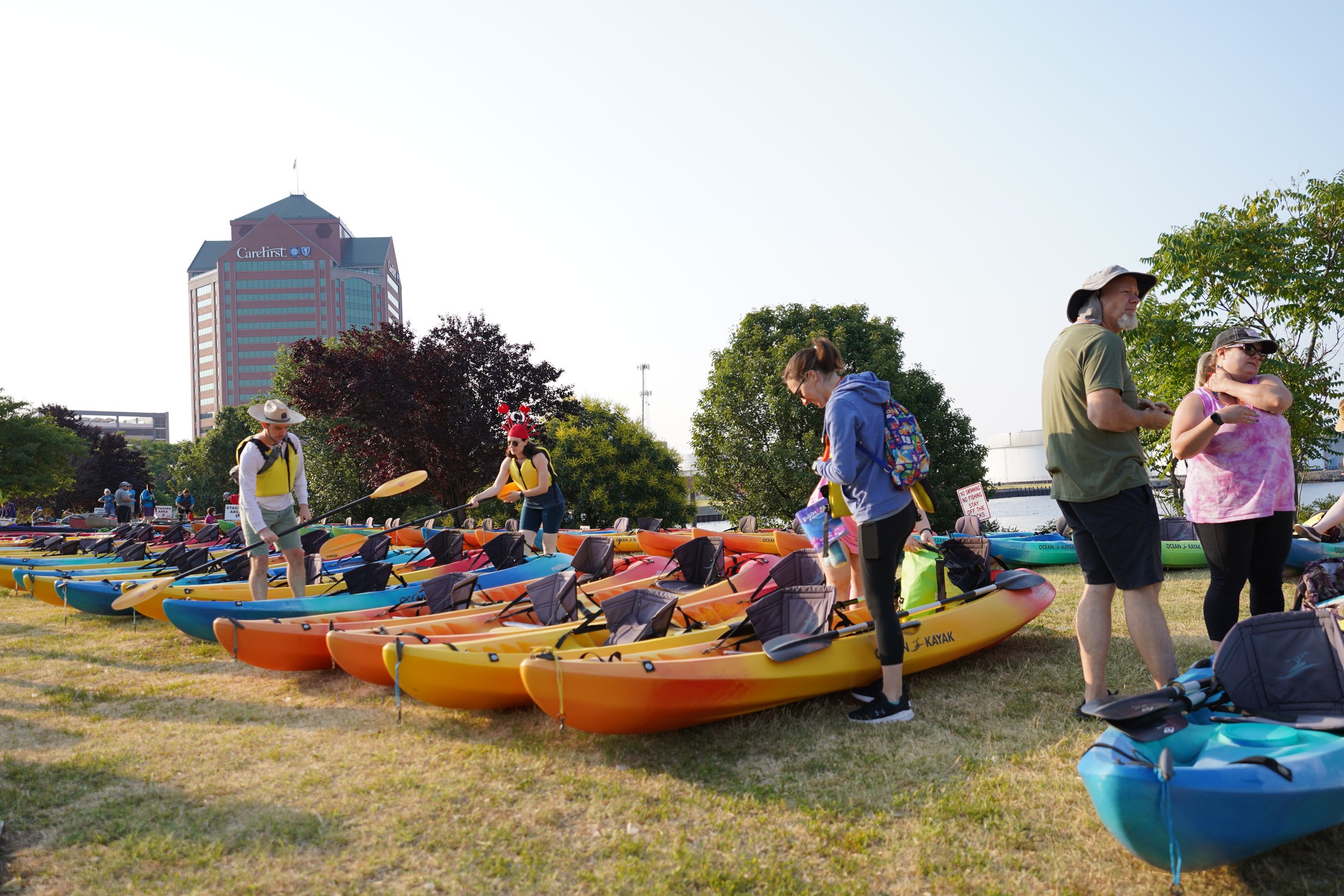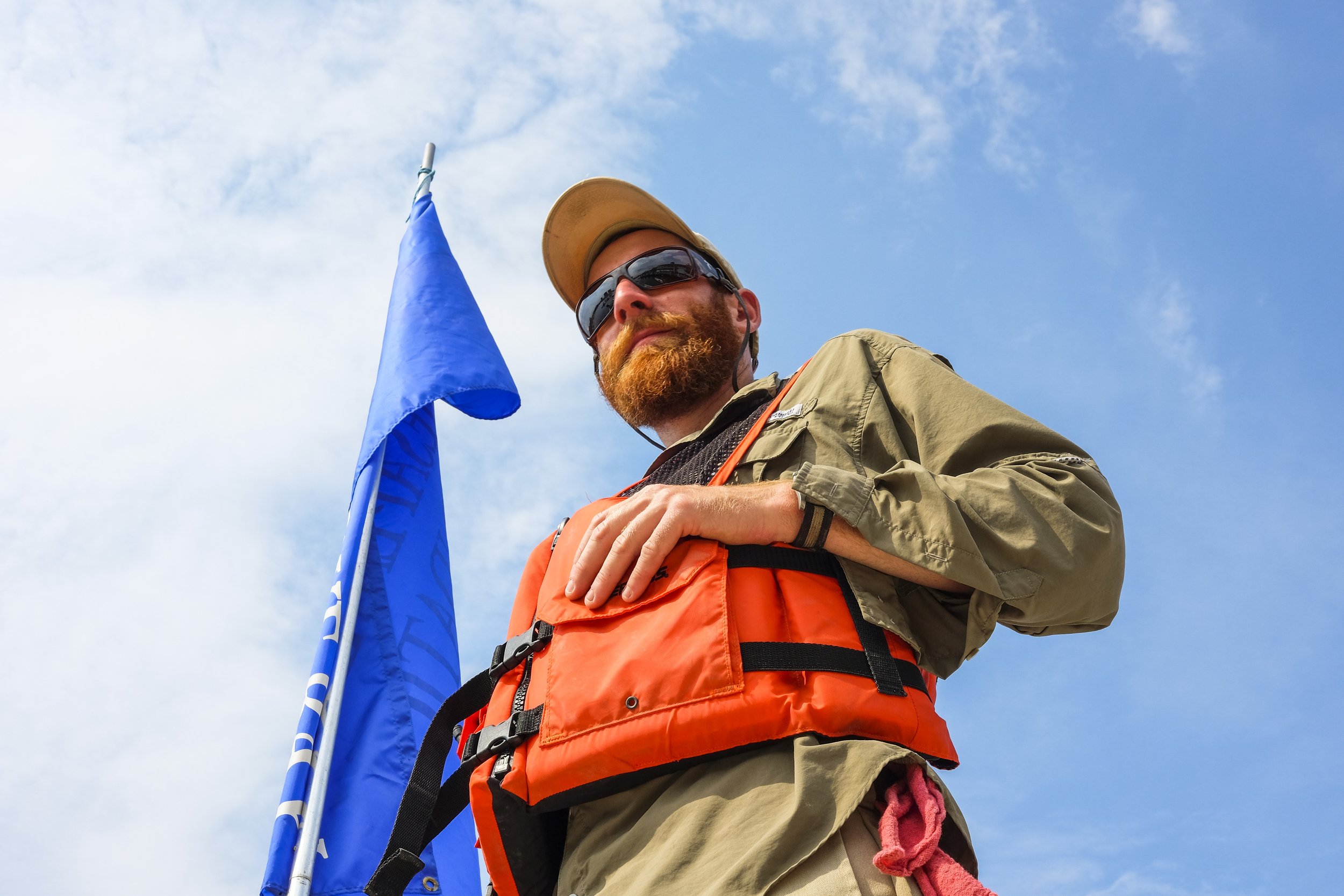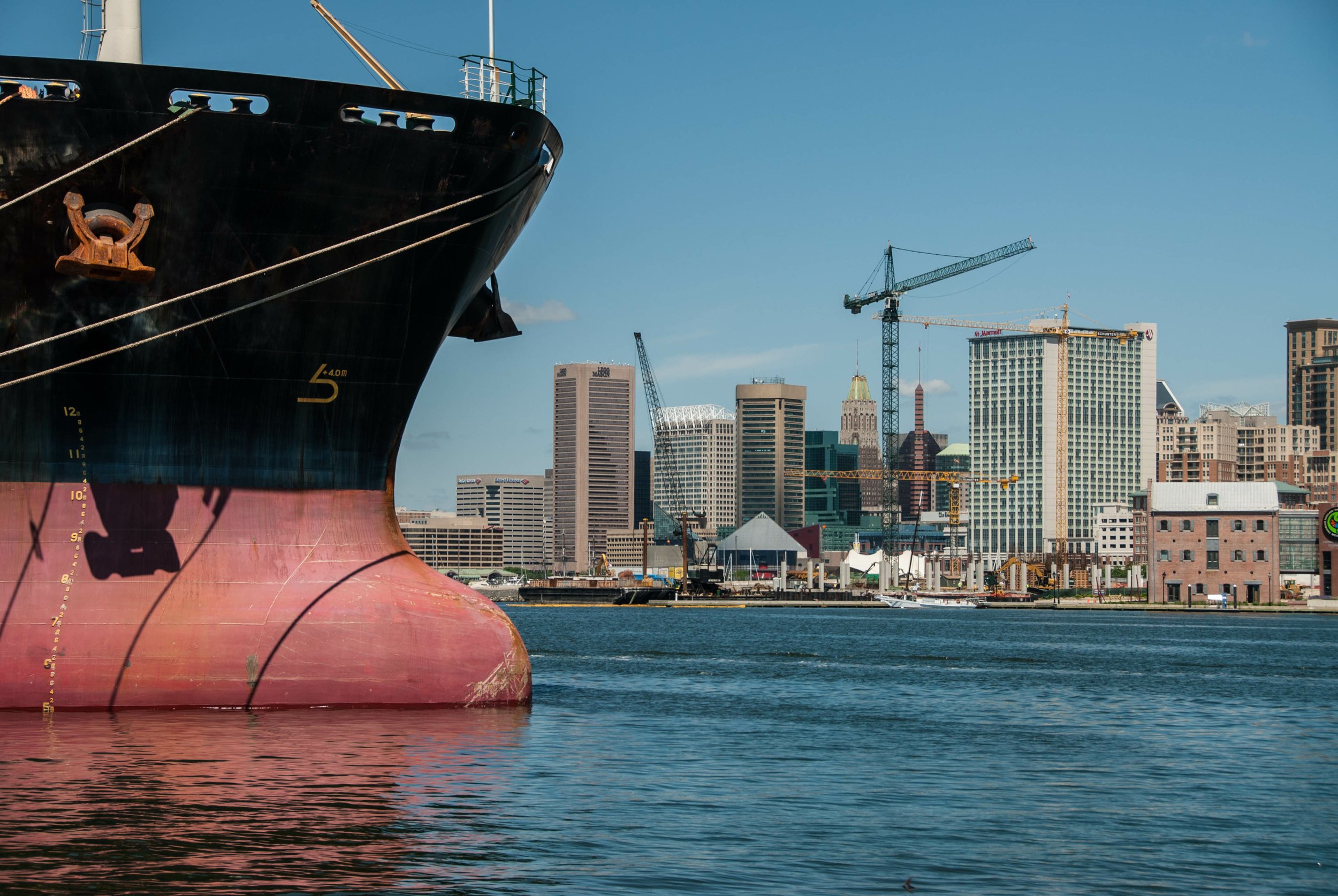Safety Information

Safe Paddling Is Fun Paddling
Whatever type of watercraft you are paddling, beginners need to learn the basics of safe operating procedures before venturing out alone. Boating can provide a great way to relax and get some exercise but always remember to take precautions to stay safe.
This safety information page is just the tip of the iceberg for paddle safety. Review checklists, expert tips, and a number of Paddler Safety Courses sanctioned by the Maryland Department of Natural Resources and recognized by the National Association of State Boating Law Administrators (NASBLA) and the U.S. Coast Guard (USCG).
Emergency Response
If you observe a paddler in distress or you are facing an emergency, immediately call 911 for assistance.

Watch The Weather
Check the marine weather forecast before you embark so you can be adequately prepared. If the wind is over 15 mph or there is a small craft advisory, conditions are not ideal, and paddling is not recommended.
Dress for the weather and know the risk and symptoms of hypothermia and sun stroke.
Be aware of potential storms and changing weather conditions.

Learn To Paddle
Whatever type of watercraft you are paddling, if you’re a beginner it’s a good idea to learn the basics of proper operating procedure before you strike out on your own.
Paddle within your ability. Knowing proper techniques will help you get the most out of your boating experience.

Stay With Your Boat
If you capsize, stay with your boat and paddle with it to shore. Power boats may have trouble seeing a person in the water, but your boat will be much easier to see.
Staying with your boat will keep you visible and reduce your chances of being struck by another vessel.

Consider Water Quality
Choose your paddle days with care. Wait to get out on the water until at least 48 hours after a heavy rainstorm. Stormwater runoff washes pollutants into the waterways and can cause sickness or infection.

Wear A Lifejacket
Always wear a properly fitted, Coast Guard-approved personal flotation device (PFD). Your PFD ensures you stay safe and prepared on the water. Maryland law mandates that there be one Type I, II, III, or V life jacket for each person on board. Additionally, children aged 10 and under must wear a life jacket at all times. Stay safe and enjoy your time on the water!

Alert Someone on Land
Let a close contact know about your plans or share your float plan with someone who is staying on land.
Pack A Whistle
Maryland law requires that vessels under 40 feet long carry a whistle or horn that’s audible for 2 seconds (applies to paddle boarders, too!).

Share The Waterways
Baltimore Harbor and adjacent waterways are centers of commercial and leisure activity. Follow the “rules of the water” and share the waterways with other watercrafts.
All vessels STAY CLEAR of freighters, barges and dredging operations.
Paddlers must STAY CLEAR of and defer to power-driven craft.
Paddlers should STAY OUT of the middle of the channel.
Paddlers should only cross the channel in a straight line or 90-degree angle.
Small power craft DEFER to larger power craft, or less maneuverable craft.
Small power craft should use the middle of the channel.
All craft DEFER to sailboats under SAIL.

Don’t Drink and Paddle
Boating, paddling, and drinking don’t mix. Maryland has a Boating Under the Influence (BUI) law which prohibits operating any watercraft while under the influence. A Blood Alcohol Concentration (BAC) of 0.08% or more is considered under the influence in Maryland. Stay sober and stay safe.
Take Only Photos, Leave Only Wake
Be a good steward of the water. Don’t litter or leave a mess for other boaters. At best it’s a nuisance, at worst it could seriously harm or kill wildlife.

Help Us Work Towards A Healthy Harbor
Waterfront Partnership's Healthy Harbor Initiative works to restore and protect our city's most valuable asset, the harbor. Through our growing list of projects, programs, and partnerships, the Healthy Harbor Initiative is educating the public about what lives beneath the surface and how we can all fight for the urban ecosystem through actions we take.










